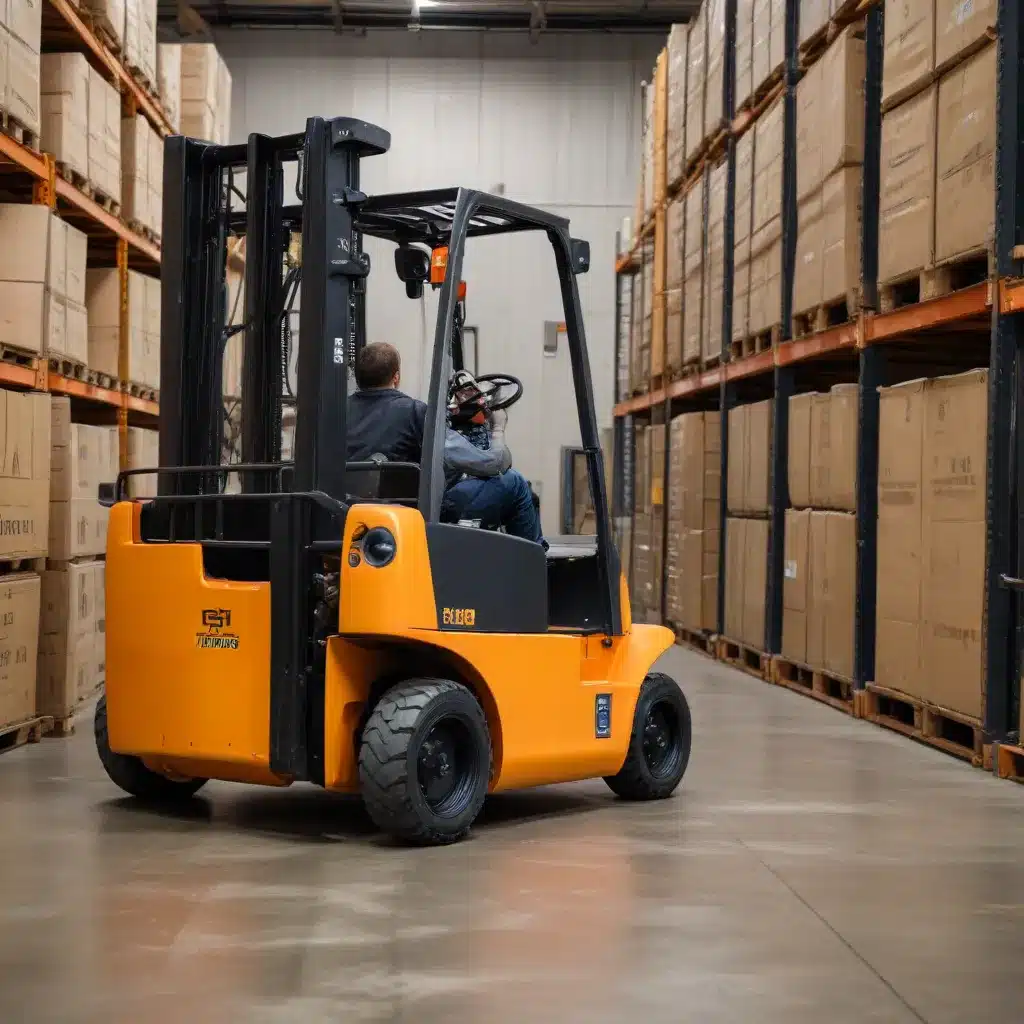
Understanding Forklift Safety Hazards in the Warehouse
Operating a forklift in a warehouse environment requires meticulous attention to safety. As a seasoned industry expert, I’ve witnessed firsthand the potential risks that forklift operations can pose if proper precautions are not taken. From blind spots and unbalanced loads to unstable floors and distracted pedestrians, the warehouse is rife with hazards that can jeopardize the well-being of both forklift operators and those working nearby.
One of the most alarming statistics from the Occupational Safety and Health Administration (OSHA) is that the fatal injury rate for the warehousing industry is higher than the national average for all industries. The US Bureau of Labor Statistics further reports an average of 16 fatalities every year in the US warehousing and storage sector, with a staggering injury and illness rate of 5 out of every 100 warehouse and storage workers.
These sobering figures underscore the critical importance of conducting thorough hazard assessments and implementing robust safety measures to safeguard forklift operations. By proactively identifying and mitigating potential risks, warehouse managers can create a culture of safety that protects both personnel and the valuable cargo they handle.
Conducting a Comprehensive Hazard Area Assessment
Effective hazard area assessment is the cornerstone of forklift safety in the warehouse. This process involves systematically evaluating the work environment, identifying potential hazards, and developing strategies to eliminate or control those risks. Here are the key steps to conducting a comprehensive hazard area assessment:
1. Inspect the Warehouse Layout and Infrastructure
Begin by closely examining the physical layout of your warehouse, paying attention to factors such as:
- Aisle Width and Clearance: Ensure that aisles are wide enough to accommodate forklift maneuverability and that overhead clearance is sufficient to prevent collisions with racking or other structures.
- Floor Conditions: Check for uneven surfaces, cracks, or debris that could compromise forklift stability and traction.
- Lighting: Ensure adequate lighting throughout the warehouse to improve visibility and prevent accidents.
- Signage and Markings: Evaluate the clarity and placement of safety signs, traffic flow indicators, and pedestrian walkways.
2. Identify Forklift-Specific Hazards
Next, focus on the unique hazards associated with forklift operations, including:
- Blind Spots: Determine the blind spots of your forklift models and implement measures to mitigate them, such as the use of convex mirrors or cameras.
- Load Capacity: Ensure that forklift operators are aware of the maximum weight capacity and understand how to properly secure and distribute loads.
- Ramp and Dock Safety: Assess the condition and safety of any ramps, docks, or loading/unloading areas used by forklifts.
- Battery Charging Stations: Evaluate the placement and safety protocols for forklift battery charging stations to prevent fire or explosion hazards.
3. Assess Pedestrian and Vehicle Traffic Patterns
Pedestrians and other vehicles in the warehouse can present significant risks to forklift operations. Carefully observe and map out the flow of foot traffic and other mobile equipment to identify potential collision points and high-risk areas.
- Pedestrian Walkways: Establish clearly marked and separated pedestrian walkways to keep personnel out of the forklift’s path.
- Interaction with Other Vehicles: Develop protocols for the safe interaction between forklifts and other mobile equipment, such as pallet jacks or hand trucks.
- Visibility and Communication: Ensure that forklift operators have clear sightlines and can effectively communicate with nearby personnel.
4. Evaluate Operator Training and Competency
The skills and attentiveness of forklift operators are critical to maintaining a safe work environment. Assess the training program and certification process to ensure that:
- Operator Certification: All forklift operators have completed the required OSHA training and hold valid certifications.
- Refresher Training: Operators regularly receive refresher training to stay up-to-date on safety protocols and best practices.
- Supervision and Monitoring: Forklift operations are closely supervised, and any unsafe behaviors are promptly addressed.
5. Develop and Implement Control Measures
Based on the findings of the hazard area assessment, create a comprehensive action plan to mitigate identified risks. This may involve a combination of engineering controls, administrative policies, and personal protective equipment (PPE) requirements. Some key control measures to consider include:
- Facility Modifications: Implement physical changes to the warehouse layout, such as wider aisles, better lighting, or dedicated forklift zones.
- Safety Policies and Procedures: Establish clear policies governing forklift operations, including speed limits, load securement, and pedestrian interaction.
- Training and Communication: Provide comprehensive training for all forklift operators and ensure that safety information is regularly communicated to the entire warehouse team.
- PPE Requirements: Mandate the use of appropriate personal protective equipment, such as hard hats, safety glasses, and high-visibility clothing.
Ongoing Monitoring and Continuous Improvement
Maintaining a safe forklift operation in the warehouse is an ongoing process that requires constant vigilance and a commitment to continuous improvement. Regularly review and update the hazard assessment, incorporating feedback from operators, monitoring incident reports, and staying informed of industry best practices and regulatory changes.
By proactively addressing forklift safety hazards and fostering a culture of safety, warehouse managers can protect their most valuable assets – their employees and the cargo they handle. Through diligent hazard area assessment and the implementation of robust control measures, you can create a work environment that prioritizes the well-being of all who enter, ensuring smooth and secure forklift operations.
For more information on forklift safety, industry trends, and maintenance best practices, be sure to visit Forklift Reviews. Our team of experts is dedicated to providing the most up-to-date and practical insights to help you optimize your warehouse operations.

